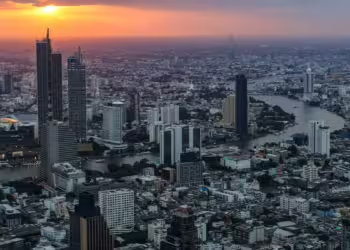No products in the basket.
Last week was tough for the Asia-Pacific region. Many countries responded to stubbornly elevated daily infections by extending or tightening social distancing measures.
The highly contagious Delta variant is challenging policymakers and threatens our the expectation that economic recoveries will gather momentum in the second half of 2021
- The slow rate of vaccination is a thorn in the region’s economic recovery.
- The Delta variant of COVID-19 is sweeping the region, causing particular pain to Southeast Asia.
- The slow rate of vaccination is a thorn in the region’s economic recovery. As Asia’s average rate of full vaccination of its population is low, lockdowns and other restrictive social distancing measures are necessary to protect the vulnerable.
- The onus is on fiscal policy to do the heavy lifting; the appetite and ability for additional monetary support is low.
Southeast Asia hit badly
Southeast Asia has been hit badly. Daily infections for Indonesia, Thailand, Vietnam are at their worst, on a seven-day moving average. The Philippines and Malaysia are not far off their daily infection peaks reached in the second quarter of 2021.
Downward revisions to GDP forecasts have previously occurred for Indonesia, Philippines and Malaysia. Further markdowns are likely for the current quarter given economic recoveries are being paused and a stronger bounce back being pencilled in for the December quarter. Indonesia is at the worse end of the spectrum.
We already downwardly-revised our forecast for GDP in our July baseline from above 5% to 4.5% and the likelihood of further downward revisions is high, as the national lockdown saps domestic demand.
Singapore is in lockdown until mid-August, but given the outsize importance of exports to the economy, there is less downside risk to the third quarter. The Philippines has eased restrictions in the past month, but the likelihood of daily infections rising now that the Delta variant has arrived are high.
Elsewhere isn’t much better
In Japan, the situation remains critical. Tokyo is in the middle of its fourth state of emergency. The Olympics officially began on 23 July with strict movement restrictions imposed on athletes and very limited spectators allowed. This has severely limited the lift to retail and hospitality from the games.
South Korea is still battling a fourth coronavirus wave that hit the country in early July. The latest wave was provoked by an easing of restrictions in various cities and an anticipation of reopening in greater Seoul as the country sought to boost consumption and retail sales. The government reintroduced tougher social restrictions nationwide [when – last week?].
With most new infections found in Greater Seoul, the strictest level of restrictions was imposed in the capital area. The country’s number of daily cases has consistently breached its December peak.
Retail and recreation activities will again plunge
Retail and recreation activities will again plunge because of the tightened social restrictions in Greater Seoul.. And the worsening virus wave will intensify the strain on the labour market, with services lagging the broader economic expansion due to stricter social distancing measures.
The situation is exacerbated by a slowdown in the vaccination pace. With the highly transmissible Delta variant, the new virus wave could be harder to contain, posing a threat to a complete reopening of South Korea’s economy.
Several states in Australia are in lockdown, which translates to around half the population subject to severe movement restrictions. Australia’s third quarter is likely to be flat at best, a severe downward revision from our prior expectation that GDP would expand 0.6% q/q in the September quarter, prior to the latest Delta variant outbreak that began in late June.
Implications of slow vaccination
Asia’s generally slow rate of vaccination is a thorn in the region’s economic recovery. Experience in the U.S. and U.K. proves that when there is a high rate of full vaccination, there is a marked improvement in health outcomes from COVID-19 contraction, irrespective of the variant.
Asia’s average rate of full vaccination of its population is low
As Asia’s average rate of full vaccination of its population is low, the need for lockdowns and other restrictive social distancing measures is necessary to protect the vulnerable. Once herd resilience is reached (around 70% of the population), the need for harsh lockdowns is removed and domestic demand does therefore not become as suppressed.
Vietnam is a useful case in point. Vietnam was Southeast Asia’s COVID-19 success story last year with its rapid introduction of containment measures and aggressive contact tracing. However, the country started to see a rise in cases in late April. Like Taiwan, the country did not apply any urgency to securing vaccine supplies when the pandemic was well controlled.
Now, it has the lowest vaccination rate in Southeast Asia. In dealing with its latest coronavirus wave, the government avoided imposing a nationwide lockdown.
The daily caseloads surged to one of the highest in the region, causing a significant plunge in commuting, retail and recreation activities. The latest lockdown measures in the southern region and Ho Chi Minh City will take a marked toll on Vietnam’s economy in the current quarter.
Excerpt from Moody’s Analytics analysis titled “Macro Roundup: It Gets Worse Before It Gets Better” authored by Katrina Ell, Senior APAC Economist at Moody’s Analytics and Dave Chia, Associate Economist at Moody’s Analytics.
Discover more from Thailand Business News
Subscribe to get the latest posts sent to your email.














